All Images
Research News
The Night Life: Why We Need Bats All the Time--Not Just on Halloween
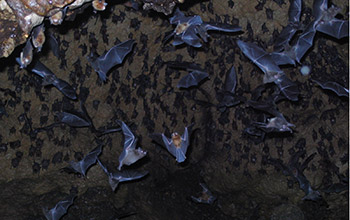
Many species of bats in a cave in Trinidad.
Credit: Gerry Carter
Download the high-resolution JPG version of the image. (1.1 MB)
Use your mouse to right-click (Mac users may need to Ctrl-click) the link above and choose the option that will save the file or target to your computer.
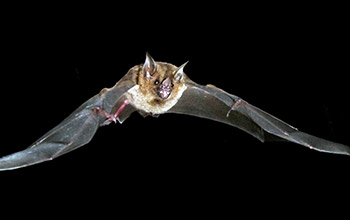
A leaf-nosed bat from the New World. The purpose of the leaf structure on the bat's face is not known for sure, but it may be important for echolocation.
Credit: Brock Fenton
Download the high-resolution JPG version of the image. (202 KB)
Use your mouse to right-click (Mac users may need to Ctrl-click) the link above and choose the option that will save the file or target to your computer.
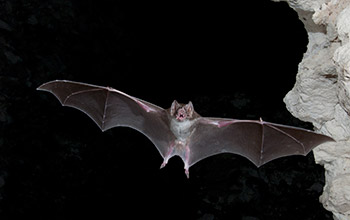
A vampire bat. Only three of the more than 1,100 species of bats are vampire bats. Contrary to popular belief, vampire bats are not true vampires because they do not suck blood. Rather, they cut a tiny slit in their prey's skin with their razor-sharp front teeth and lick up the resulting blood. Chemicals in the bat's saliva prevent clotting in order to keep the blood flowing until that bat has consumed its fill, which is generally less than an ounce. These anti-clotting chemicals are currently being researched for possible use as anticoagulants for people who are at high risk for blood clots, such as people who have recently suffered strokes.
Credit: Brock Fenton
Download the high-resolution JPG version of the image. (5.5 MB)
Use your mouse to right-click (Mac users may need to Ctrl-click) the link above and choose the option that will save the file or target to your computer.
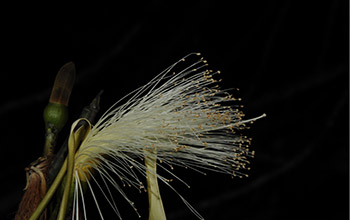
The buds of this flower--a Pseudobombax ellipticum--open explosively at night and are primarily pollinated by bats.
Credit: Brock Fenten
Download the high-resolution JPG version of the image. (1 MB)
Use your mouse to right-click (Mac users may need to Ctrl-click) the link above and choose the option that will save the file or target to your computer.
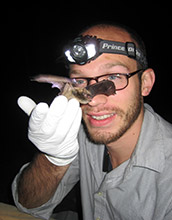
A little brown bat is released by a University of California, Santa Cruz, graduate student. There are more than 1,000 bat species with varied wing spans, weights and facial features. Bats account for about 20 percent of all mammalian species.
Credit: Kate Langwig
Download the high-resolution JPG version of the image. (1.2 MB)
Use your mouse to right-click (Mac users may need to Ctrl-click) the link above and choose the option that will save the file or target to your computer.
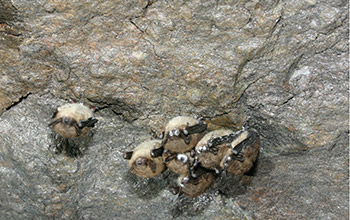
Hanging out: Hibernating little brown bats that have white-nose syndrome in a mine in New York.
Credit: Kate Langwig
Download the high-resolution JPG version of the image. (3.3 MB)
Use your mouse to right-click (Mac users may need to Ctrl-click) the link above and choose the option that will save the file or target to your computer.
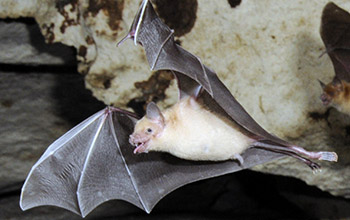
This bat has a long tongue for nectar feeding. The ears of bats are shaped to maximize detection of sound waves for echolocation. Bats emit sounds for echolocation through their mouths or noses, depending on the species.
Credit: Brock Fenton
Download the high-resolution JPG version of the image. (407 KB)
Use your mouse to right-click (Mac users may need to Ctrl-click) the link above and choose the option that will save the file or target to your computer.
What bats teach us about ourselves, with Seth Horowitz, bat researcher, neuroscientist and author of "The Universal Sense: How Hearing Shapes the Mind."
Credit: National Science Foundation
Bat chat: Basics about bats with Kate Langwig of the University of California, Santa Cruz, and Boston University.
Credit: National Science Foundation
